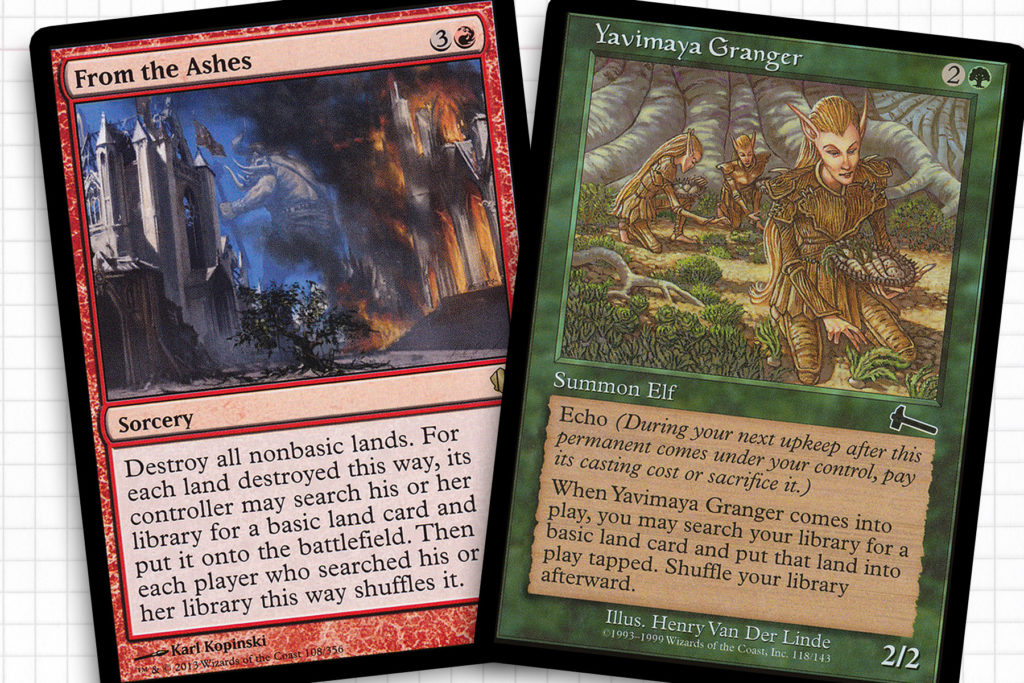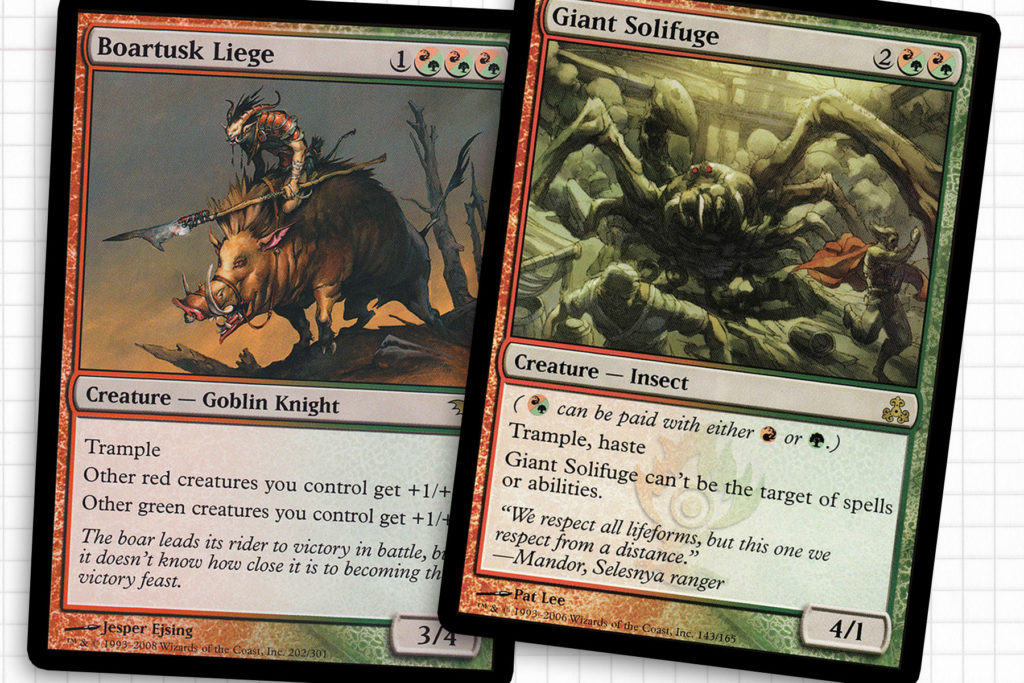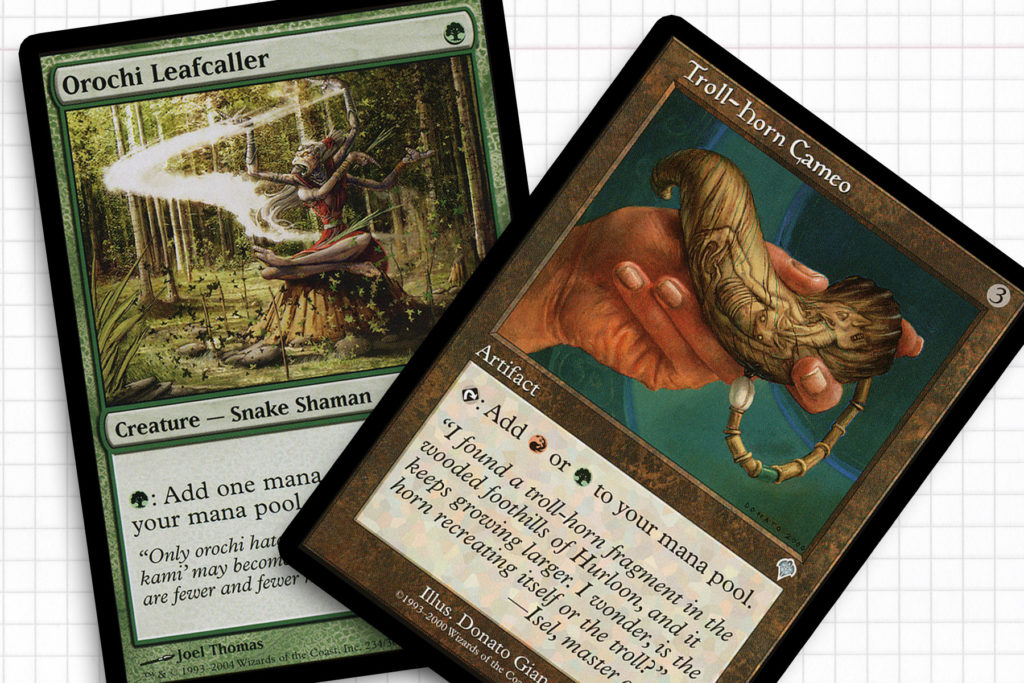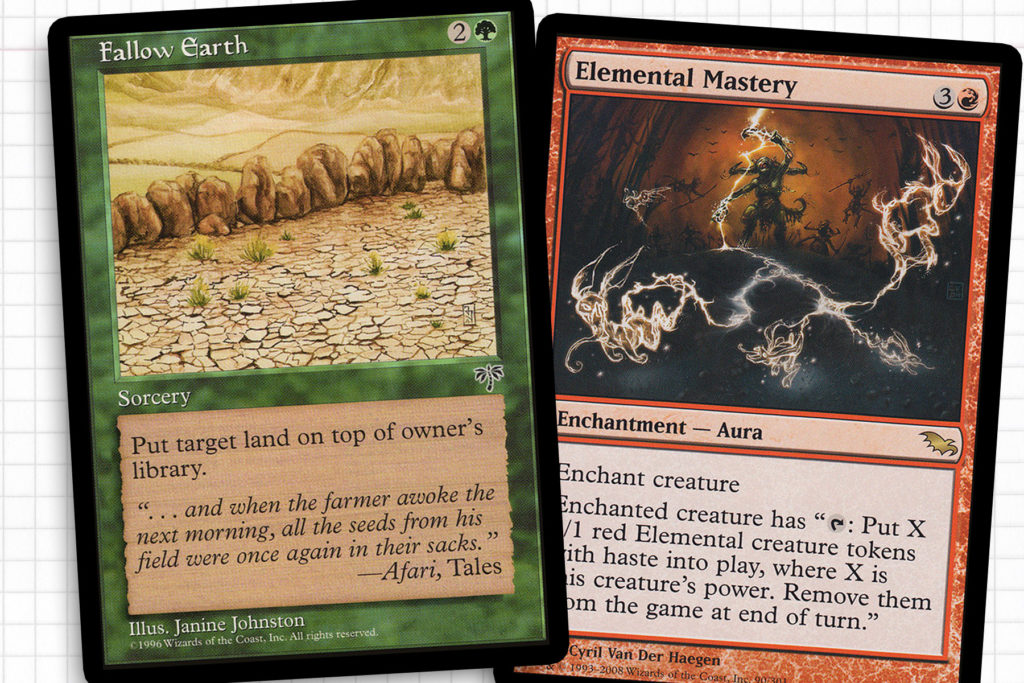As many Commander players can likely attest, sometimes you have really inspired and genius ideas for decks that come together perfectly. And sometimes you just have bad ideas. There has been this glimmer in the back of my mind for quite a long time—going on two years—of a Commander deck that I have repeatedly assumed was a bad idea. This deck wanted to evolve in a different direction than other decks, where the themes would be built not upon something like tribes or artifacts, but on basic lands. To many, a deck where basic lands were the preferred currency probably goes in the face of what makes Commander great. People love their dual lands, Gavony Township, Urborg, Tomb of Yawgmoth, and Kessig Wolf Run so much that to imagine playing games without them could make them physically ill.
But today I would like to explore a deck where the first goal was to play deck with almost entirely basic lands and the goals evolved from there. As the masthead image for this article has already revealed, I ended up on Wort, the Raidmother, who became emblematic of the philosophy this deck took on over time. This deck may or may not work, but where has the fun ever been in doing some you knew would work?
Wort, the Raidmother
The genesis of this deck started a good ways back. As I watched my friend, mutual MTG dad and local “always the threat” Alex Szeto playing Primal Order to great effect, it got me thinking about how good of a metagame call it was in a store densely populated by three-color decks. My answer at the time had been to play Ib Halfheart, Goblin Tactician and unleash the raw power of Ruination upon the masses, a game plan that often upended games and reduced fun. I had always felt that the social contract protected nonbasic lands without explicitly saying “lands were not made to be destroyed” as the time I had spent playing with the general public taught me that people were hypersensitive to their lands being destroyed in any quantity.
Alex’s answer intrigued me, combined with Hall of Gemstone, Alex has crafted a mono green deck that penalized players from playing a lot of colors and normally shut off the functionality of dual lands. But being a rebel, I wasn’t content with playing Omnath, Locus of Mana or Yeva, Nature’s Herald; I wanted more and a few scans through Gatherer told me that I would find what I was looking for in red. To fit this plan I have always been of the belief that hybrid mana would be the best choice to allow me to avoid having my mana cut off, while handicapping my opponents. Wort, the Raidmother makes the most sense of the two options and can play as a fun back-up plan to start doubling up spells at different stages of the game. But much like my writings on Yasova Dragonclaw and Shattergang Brothers, Wort is a color-identity-setting general first and long-term plan second.

Living Basic
When I say that I want the deck to run mostly on basic lands, I’m not kidding: with the typical 37-39 land count I would expect the only real breaks from this philosophy to be Evolving Wilds, Terramorphic Expanse, and Mountain Valley. This choice not only makes Primal Order (and if you’re bold, Blood Moon) effectively one-sided for us; but also means that cards like Sword of the Animist, Frontier Guide, Boundless Realms, Perilous Forays, Rowen, and Sprouting Vines will never be without a target.
Additionally, Conjurer’s Closet allows us to make cards is the mold of Borderland Ranger, Fertilid, and Sylvan Ranger even more impressive. I am not a skilled Magic player, but even I know the power of consistent land drops every turn and since basic lands are treated like the gold standard for dependability, I want to lean hard into how easy Wizards has made accumulating them as part of green’s color pie.
While we will be trying to benefit of an uncomplicated mana base, the flip side of the coin is that I want to make life difficult for the rest of the table. While I don’t want to get too hyperbolic and call this deck something in the mold of a Ponza deck, cutting out chunks out of opponents’ mana base not only with Hall of Gemstone, but also something like Dwarven Miner may mean we can buy ourselves extra turns when our path to victory is more fragile. To pair with our suite of beneficial cards, we’ll also want Burning Earth, From the Ashes, Price of Progress, and—bane of all color saturated decks—Ruination.
While I would not normally advocate Ruination, Shivan Harvest, or Dwarven Miner—mainly because I feel that it gets used by people in situations where there is not a clear path to victory on the table—I feel effects like this are healthy for the “ecosystem” of Commander, as players should face the threat of being penalized for drifting too far from basic lands. And on a macro level, these spells help to level the playing field as our deck doesn’t have the same raw power. Of course there are other ways to take advantage of how most people assemble their decks by playing Detritivore, Skyshroud War Beast, or Wilderness Elemental as huge attackers.

Hybrid Splash
Wort’s hybrid mana cost very much drove how I thought about spells for this deck. With Hall of Gemstone in play, the hybrid cards become appealing because a lot of their cost is sunk into generic mana, with only a splash of color required. This means that our choice of color can be based more on the non-hybrid spells in our hand and any activated abilities in play. This flexibility also takes pressure off our complete dependence on mana rocks or Birds of Paradise like creatures slotted into our deck.
The perk of hybrid is that it allows for creatures to be both green and red, granting us constant access to Wort’s conspire ability, brings the value of Boartusk Liege up substantially, and makes devotions spells in either color live draws. A quick aside: people need to think about the Liege cycle out of Shadowmoor block more, especially the Eventide ones which are useful in creature based decks that can play them.
Of the hybrid cards, Tattermunge Duo, Boggart Ram-Gang, Deus of Calamity, Runes of the Deus, Rubblebelt Raiders, Giant Solifuge, and Burning-Tree Shaman are all excellent highlights, with the Deus and Solifuge being great finishers. The casting costs of all these also makes Xenagos, God of Revels an excellent addition—which is also splashed easily for the deck—as he should be turned on fairly easily and makes spare creatures into threats.

Keeping the True Colors
The power of a card like Hall of Gemstone can really distort games. Reading it carefully you’ll realize that all mana being produced by everyone’s lands each turn is only the chosen color, something that cripples counterspell decks rather handedly. I was once in a game where a Muzzio, Visionary Architect deck stumbled several times a turn when they realized they could not activate their general at end of turn reliably or cast spells like Cryptic Command reactively. For us, if our game plan is going correctly mana rocks and mana dorks are going to be really important for maintaining access to any mana we will need, especially on other people’s turns.
There have been a healthy amount of creatures capable of producing any color of mana through Magic’s history, which means that the net is pretty wide in terms of what we can plug into our deck. I would start with creatures like Birds of Paradise, Alloy Myr, Utopia Tree, Beastcaller Savant, and Cultivator’s Caravan as relatively low-cost cards that will be able to supply our colors. I think the Rosetta Stone of mana has to be Orochi Leafcaller for this deck. When we set Hall of Gemstone to green, we can filter our mana into any other colors we need each turn. And through the Leafcaller, on other player’s turns mana rocks are not limited to the colors they make naturally.
Speaking of mana rocks, the obvious includes of this deck are Darksteel Ingot, Commander’s Sphere, and Astral Cornucopia. I believe this is a deck where Gruul Signet would see play, and we can get a lot of use of Star Compass accessing mana we may get shut out of. We may even extend out into Troll-Horn Cameo, Horn of Ramos, and Heart of Ramos depending on how much we want to be prepared. The only shortcoming here is that artifact destruction is rampant throughout the format, an issue we may be able to skirt if we execute on our land destruction plans, removing our opponents’ access to all the specific mana they need.

Seeing Double
The final part of our plan is leveraging the power of conspire. If you account for two creatures being held back from an attack, a lot of spells go from game changing to game winning. Right off the bat, Overrun can kill from a lot further out, Mercadia’s Downfall becomes a surprise alpha strike no one planned for, we can make Sangrite Strike potent, and Triumph of the Horde probably gets to kill two people instead of one. But conspire can help us in the earlier stages of the game as well, finding two lands off of Rampant Growth, hitting players for quadruple damage of each of their nonbasic lands with Price of Progress, turning Fallow Earth into Plow Under, and Plow Under into a rage quit.
Wort’s static ability can push deck construction into wanting more tokens, possibly in the form of Flameshadow Conjuring, Elemental Mastery, or Goblinslide. I don’t know that I am convinced as of the writing of this article that there is a viable strategy there, but this may be a case where I would defer to Alex, as he’s got insights on angles I often have shortcomings about.
In some ways I feel that this might be one of the more vindictive decks that I’ve laid out. In other ways, I feel like it might be too fair to really be competitive against a lot of people, even in my own lower tiered metagame. Overall I like the idea of having a restriction that also cuts down on a mana base that can be harder to come by, making it more attractive to newer players than enfranchised players. My instincts tell me that there is the spark of a good idea here, and I bet somebody reading this has already thought of a more productive way to build this deck. I would love to hear feedback on that exact topic. Until next time, thanks all.

